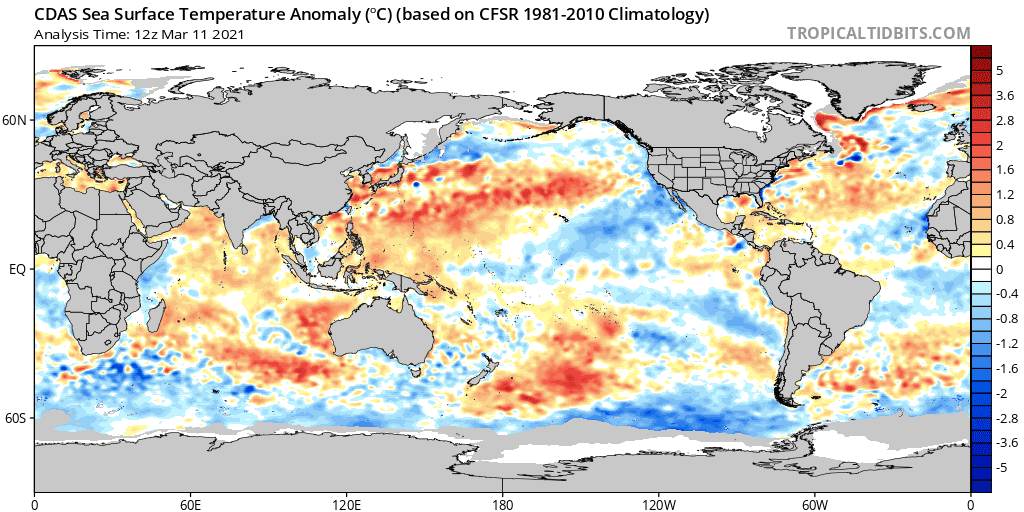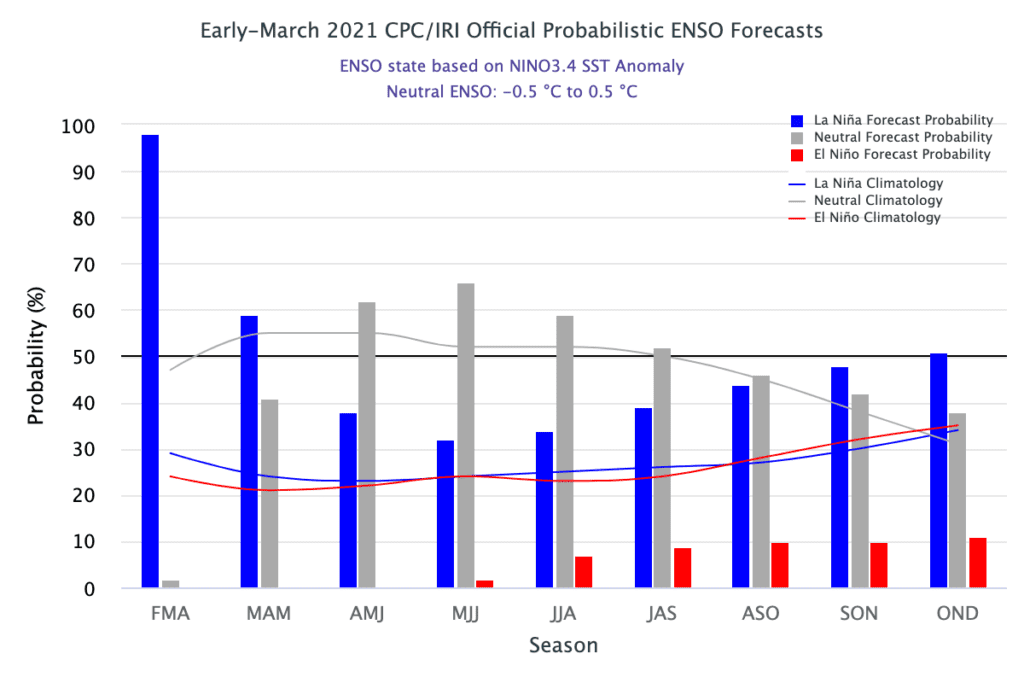La Niña continues in the tropical Pacific but there are strong signals it is finally weakening and on its way out. That’s the word from the Climate Prediction Center (CPC) in their March update. CPC forecasters indicate the La Niña has recently weakened and they estimate there is a about a 60% chance for a transition to ENSO-neutral conditions sometime this spring.

The latest observations of sea surface temperatures in the central and eastern Pacific indicate that readings have slowly warmed over the past few weeks. Below the surface, the large area of cooler than normal water that’s been present since last fall has warmed noticeably over the past month. Also, atmospheric coupling (the atmospheric response to the changed sea surface temperatures) weakened during February. In other words, the atmospheric pattern we expect during La Niña—less rain and clouds over the central Pacific and more over Indonesia—was still present but was reduced from earlier in the winter. The Southern Oscillation and Equatorial Southern Oscillation indexes were both still positive, but they have also weakened. Overall, most indicators point toward a weak and decaying La Niña.
The majority of the computer-model ENSO projections call for a transition to ENSO-neutral conditions in the spring. The weakening La Niña factors mentioned earlier add confidence to these predictions. But what about later in the year? CPC forecasters state long-range ENSO predictions are notoriously difficult this time of year, compared to other times. That’s because there are so many changes taking place in the atmosphere and oceans this time of the year that make forecasting really challenging. This includes ENSO, which is often changing from one phase to another (e.g., from La Niña to neutral) in the spring months.
The latest CPC fall outlook calls for odds of about 40-45% for ENSO-neutral conditions and odds of about 45-50% for La Niña. CPC forecasters believe El Niño is unlikely, with only about a 10% chance of development by the early winter. It’s interesting to note that in the historical record, El Niño has only developed twice following a first year La Niña going back to 1950. Predictions over the next couple of months are going to be low confidence. But by June, we should be able to get a clearer picture of how the rest of the year will look regarding the state of ENSO.

Bob


Social Media